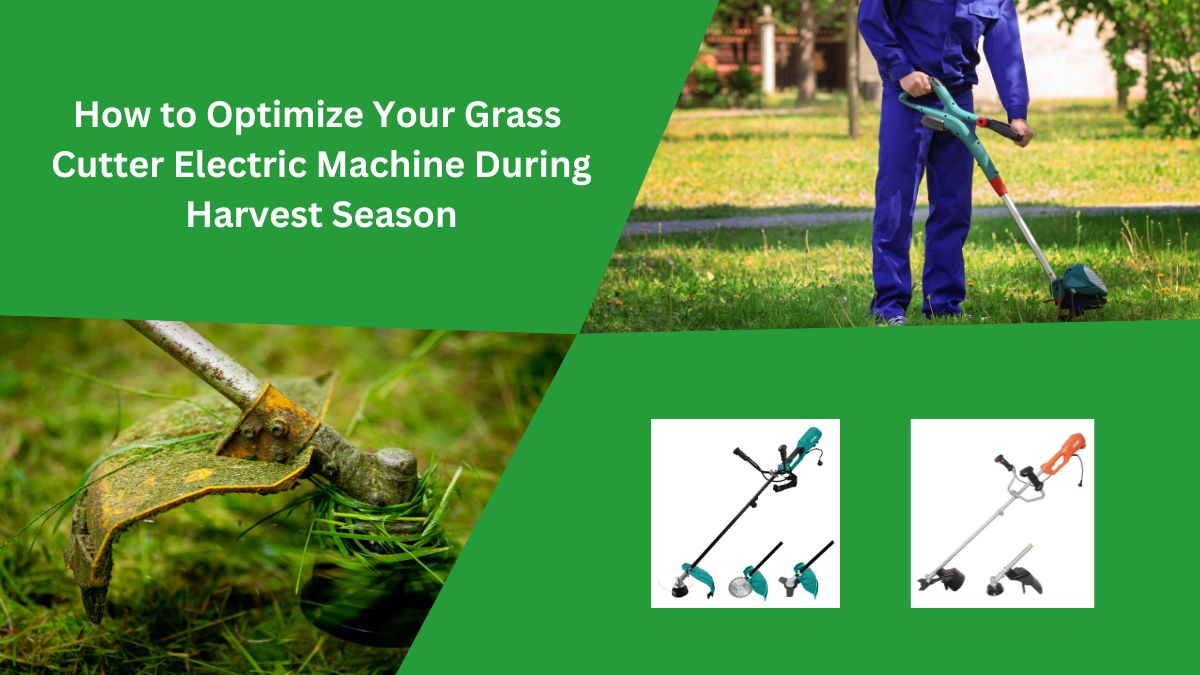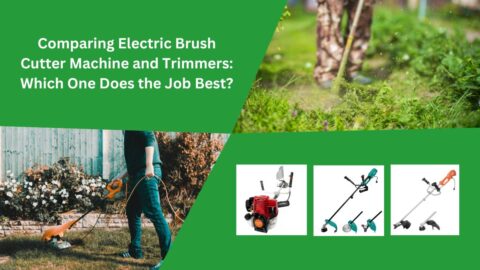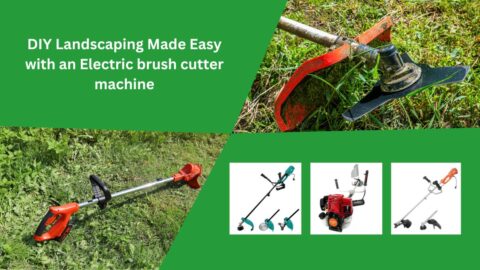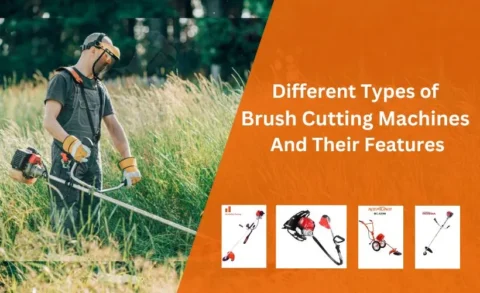Electric grass cutters, such as the grass cutter electric machine or brush cutter electric models, are essential tools for maintaining fields and gardens, especially during the harvest season. The ease of use, lower environmental impact, and reduced noise levels make them a preferred choice for many. However, like any tool, they require proper care and understanding to function effectively, particularly when the workload increases during harvest.
1. Getting to Know Your Electric Grass Cutter
Components Overview
Understanding the basic components of your electric brush cutter machine is the first step to optimizing its performance. Typically, these machines include a motor, blades, a battery (for cordless models), and a housing unit. Familiarizing yourself with these parts helps identify issues and ensure each component is in good working condition.
Capabilities and Limitations
Every brush cutter machine has its own set of capabilities and limitations. Some are designed for light trimming, while others can handle thicker grass and longer working hours. Knowing what your machine can and cannot do will help you avoid pushing it beyond its limits, which can lead to malfunctions or damage.
2. Pre-Harvest Preparation
Before the harvest season kicks into full swing, it’s crucial to ensure your electric brush cutter is ready for the job. Here’s how:
Battery Check and Maintenance
For battery-powered grass cutters, the battery is the heart of the machine. Ensure it is fully charged and in good condition. If the battery shows signs of wear, such as reduced operating time or difficulty holding a charge, consider replacing it before it becomes a problem.
Blade Inspection and Sharpening
A sharp blade is vital for efficient cutting. Before the harvest season, inspect the blade for any signs of dullness, rust, or damage. A dull blade can strain the motor and result in uneven cutting. Sharpen or replace the blade as necessary to ensure a clean, easy cut.
Motor Functionality Check
Listen to your electric brush cutter machine during a test run. Any unusual noises, such as grinding or rattling, could indicate a problem that needs addressing before you start your harvest tasks. It’s better to fix minor issues early than deal with a breakdown during a busy day.
Safety Gear Essentials
Safety should always be a priority. Make sure you have the proper protective gear, including gloves, eye protection, and sturdy footwear. This not only keeps you safe but also allows you to work more efficiently, knowing you’re well-protected.
3. During Harvest: Tips for Optimization
Once the harvest season begins, it’s all about maintaining peak performance. Here are some key tips:
Importance of Taking Regular Breaks
Overheating is a common issue with electric brush cutter machines, especially during long periods of use. Taking regular breaks allows the motor to cool down, preventing potential damage and prolonging the life of your machine.
Adjusting Blade Height According to Grass Length
The height of your grass can vary, and your blade height should be adjusted accordingly. Cutting tall grass with a low blade setting can overload the motor, while a higher setting might leave the grass too long. Find the right balance to ensure efficient cutting without straining the machine.
Avoiding Overloading the Machine
Pushing your brush cutter electric beyond its capacity, such as trying to cut very thick or wet grass, can lead to motor strain or damage. If the grass is particularly thick, consider making multiple passes rather than trying to cut it all at once.
Keeping the Grass Cutter Clean
Grass clippings can clog the cutting deck and motor vents, leading to overheating and reduced performance. Regularly clean your electric brush cutter during use, especially if you notice a drop in performance.
Handling the Machine with Care
While it might seem obvious, handling your grass cutter electric machine with care can prevent a lot of common issues. Avoid dropping or bumping the machine, as this can damage internal components and affect performance.
4. Post-Harvest Care and Maintenance
After a long day of cutting, your electric brush cutter deserves some care:
Thorough Cleaning of the Grass Cutter
Once you’ve finished your work, give your brush cutter machine a thorough cleaning. Remove all grass clippings, dirt, and debris from the blade, motor, and exterior. This helps prevent rust and keeps the machine in good condition for future use.
Proper Storage Techniques
Store your electric brush cutter machine in a dry, cool place, away from moisture and extreme temperatures. Proper storage extends the lifespan of the machine and prevents issues like rust or battery degradation.
Battery Storage and Maintenance Tips
For battery-powered models, it’s important to store the battery separately in a cool, dry place. Follow the manufacturer’s recommendations for battery storage to ensure it remains in good condition.
5. Additional Tips for Optimal Performance
To keep your brush cutter electric running smoothly throughout the harvest season, consider these additional tips:
Having a Battery Backup
If you have a large area to cover, having a backup battery can be a lifesaver. This allows you to swap batteries and keep working without waiting for a recharge.
Ensuring Extension Cord Safety
For corded models, make sure you’re using an outdoor-rated extension cord of appropriate length. A cord that’s too long or not rated for outdoor use can cause power drops or even damage the motor.
Considering Weather Conditions
Avoid using your electric brush cutter in wet or rainy conditions. Water and electricity don’t mix, and wet grass can clog the machine, leading to poor performance or electrical hazards.
6. Common Mistakes to Avoid
Even with the best intentions, there are common mistakes that can hinder the performance of your electric brush cutter machine:
- Neglecting Regular Maintenance: Skipping routine checks can lead to bigger problems down the line.
- Ignoring Manufacturer Instructions: Always follow the user manual for the best results.
- Using the Wrong Blade Height: Adjust the blade height according to the grass type and length to avoid motor strain.
Conclusion
The harvest season is demanding, but with the right preparation and care, your grass cutter electric machine can handle the workload efficiently. By understanding your machine, performing regular maintenance, and following the optimization tips provided, you can ensure that your electric brush cutter runs smoothly throughout the season. Remember, a well-maintained machine not only performs better but also lasts longer, saving you time and money in the long run.
FAQs
Q1. Why buy a brush cutter?
Brush cutters are ideal for cutting where a mower can’t reach. When dealing with dense undergrowth, overgrown grass, or hard-to-reach weeds, you should buy brush cutter to clear them out quickly and easily. Whether it’s uneven terrain, difficult access, or obstacles, a reliable brush cutter will handle the job efficiently.
Q2: How often should I sharpen the blade of my electric grass cutter?
A: It depends on usage, but the blade should be sharpened at least once a season. If you notice uneven cutting or excessive vibration, it’s time to sharpen or replace the blade.
Q3: Can I use my electric grass cutter on wet grass?
A: It’s not recommended. Wet grass can clog the machine and lead to electrical hazards. Always wait for the grass to dry before cutting.
Q4. Brush cutter machine for sale used?
If you’re searching for a brush cutter machine for sale, consider exploring both new and used options. A used brush cutter can offer great value, allowing you to get the equipment you need at a lower price while still maintaining performance.
Q5: How can I prevent my electric grass cutter from overheating?
A: Take regular breaks during extended use, clean the machine frequently, and avoid cutting thick or tall grass in one pass.
Q6: What should I do if my battery is not holding a charge?
A: First, try charging it fully. If the problem persists, it may be time to replace the battery. Check the manufacturer’s guidelines for battery care.










